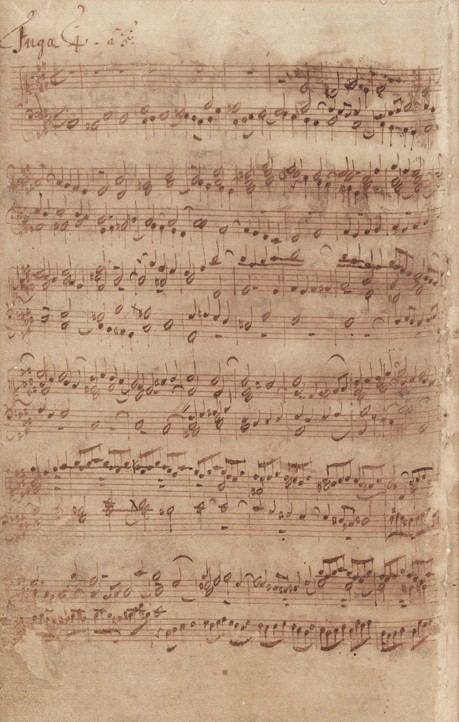 | ||
The prelude and fugue in C-sharp minor, BWV 849, is a pair of keyboard compositions by Johann Sebastian Bach. It is the fourth prelude and fugue in the first book of The Well-Tempered Clavier, a series of 48 preludes and fugues by the composer.
Contents
Prelude
The solemn and expressive, recitative character of the melody is reminiscent of Bach's passion music. A direct relationship between the prelude and its fugue, while not readily apparent, is hinted in the long-held durations of the bass in the first ten measures. If one omits the bass pitches of measures 4-7, what remains of measures 1-10 are the pitches C-sharp, B-sharp, E, D-sharp, C-sharp of the fugue's subject. The prelude's most memorable motif is an ascending octave leap, which is heard throughout the piece
Fugue
At 115 measures in length, and in five voices, this is one of Bach's longest and most densely crafted fugues. While it contains three themes, it is not properly structured as a triple fugue because only the first idea receives exposition. The other two themes are more in the nature of countersubjects. The five voices are heard at the beginning of the fugue in ascending order, starting with the bass. The subject is heard in stretto in m. 55, and again densely so in mm. 94-99.
The subject (C-sharp, B-sharp, E, D-sharp C-sharp) is a cross motif in half and whole notes. But for one interval, it is the same as BACH's signature motif. The contour of descending half step, ascending diminished fourth, and descending half step is the same as the Advent Chorale "Nun Komm, der Heiden Heiland" (Kerman 2005, 28). (The second theme, which enters in measure 36, is a flowing changing-tone motif, in eighth notes, that can be heard as a diminution and motivic transformation of the main subject. In measure 49 a third theme enters in concert with the prior two. These three are heard as invertible counterpoint in measures 49-88, at which point the second theme drops away. Thereafter, the 1st and 3rd themes continue to the end, with a striking dissonance on the downbeat of measure 112, four bars before the end.
